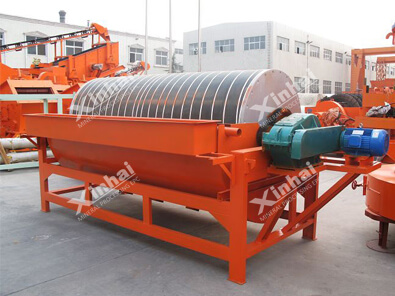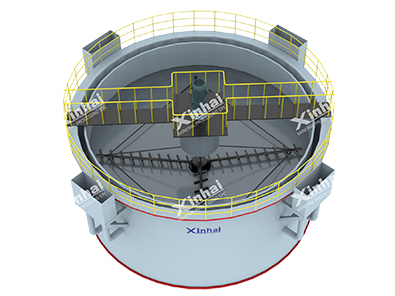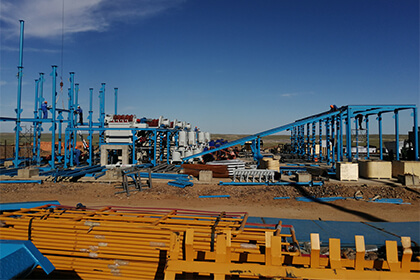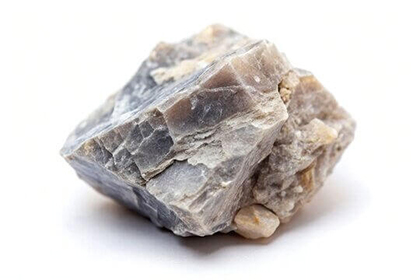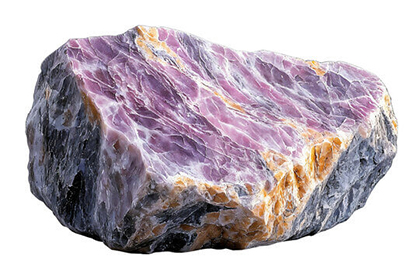Quartz Acid Leaching Process Explained
 Shirley
Shirley
 Dec 08, 2021
Dec 08, 2021
 2831
2831
If you want to know more details about equipment, solutions, etc, please click the button below for free consultation, or leave your requirements!

Quartz sand is the important industrial raw material. Acid leaching is one of the important part of quartz purification. The main function of acid leaching is to remove some acid-soluble metal oxides and some silicate minerals to obtain high-purity quartz sand that can be used in industrial production. This article will teach you the principle, process, influencing factors, causes of product yellowing and preventive measures of the quartz sand acid leaching process.
01 Quartz Acid Leaching Principle
BackQuartz sand acid leaching is to use the characteristics of quartz sand that is insoluble in acid (except HF), and the acid solution can dissolve other impurity minerals, and remove iron, aluminum, calcium, magnesium and other impurities on the surface to achieve purification of quartz.
02 Quartz Acid Leaching Process
BackHydrochloric acid, sulfuric acid, oxalic acid, hydrofluoric acid are commonly used in quartz sand acid leaching. The general process is crushing - washing - magnetic separation - acid leaching - washing - dewatering – drying. After the quartz sand is broken, some impurities can be removed by washing with water, and more than 99% of mechanical iron can be removed by magnetic separation. The following is the specific operation process of the acid leaching stage:
Heat a certain concentration of hydrochloric acid solution to a certain temperature and treat for 2-3 hours. The amount of hydrochloric acid is about 5% of the quartz sand weight.
After washing, mix the quartz sand with concentrated hydrochloric acid and sulfuric acid (98%) and leave at room temperature for 1-2 hours. Or stir the mixed solution and quartz sand for a period of time to wash off the acid.
Mix water, oxalic acid, and copperas into a solution at a certain temperature according to a certain ratio. Mix and stir the quartz sand and the solution according to a certain ratio. After a few minutes, the solution is filtered out and recycled after treatment. Quartz sand is cleaned, dehydrated and then dried.
Add hydrofluoric acid for treatment. Hydrofluoric acid works better when used alone, but requires a higher concentration. A lower concentration of hydrofluoric acid may be used with sodium disulfite.
Add a certain concentration of hydrochloric acid and fluorosilicic acid solution to the quartz sand slurry at the same time. It can also be treated with hydrochloric acid solution first, and then treated with fluorosilicic acid after washing with water. Or invert the order, treat it at high temperature for 2-3 hours, and then filter and wash.
03 Quartz Acid Leaching Influencing Factors
Back(1) Acidity
The acid leaching process is actually a chemical reaction between impurities and acid. Under certain conditions, the concentration and composition of various acids are different, and the effect of the reaction with impurities is different. Practice shows that at a certain temperature, if the acidity increases properly, the more reactant molecules per unit volume, the more activated molecules. Practice shows that at a certain temperature, if the acidity is appropriately increased, the more reactant molecules per unit volume, the more activated molecules, the reaction speed will increase, improve the acid leaching effect.
(2) Temperature
Temperature is the decisive factor of quartz sand acid leaching effect. The associated minerals of quartz sand, such as epidote and rutile, can react with acid at room temperature. If heated during acid immersion, the effect will increase with the increase of temperature. The difference of processing effect between winter and summer is mainly due to the difference of external temperature.
(3) Time
Under the condition of constant acid and temperature, the length of quartz acid leaching time directly affects the effect of impurity removal. In winter, the external temperature is low, and the mineral impurities in quartz react slowly with acidic substances, which needs to be extended for a certain time to achieve the desired effect.
In addition, the acid leaching time is also related to the particle size of quartz sand. When quartz particles are small, the contact area with acid is large and the reaction speed is fast. If the quartz particles are large, the opposite is true. At this time, the reaction time should be prolonged to achieve the ideal acid leaching effect.
04 Quartz Sand Products Yellowing Reasons
BackImproper operation of the quartz sand acid leaching process may cause the yellowing of the quartz sand product. The main reasons are the following three aspects:
Part of the quartz sand is not equipped with a magnetic separation process before acid leaching, so the quartz sand contains mechanical iron. After acid leaching, part of the mechanical iron remains in the quartz sand, and the mechanical iron is rapidly oxidized, contaminating the quartz sand, causing the quartz sand to directly turn yellow.
The acid leaching is not thorough, and part of the acid remaining on the surface of the quartz sand particles reacts with chloride ions and sulfide ions on the surface of the quartz sand, resulting in yellowing of the quartz sand product.
Quartz sand contact with the transportation equipment before drying causes secondary pollution, and then contacts with iron to oxidize and make it yellow.
05 Quartz Sand Products Yellowing Preventive Measures
Back(1) Transportation Equipment
Quartz sand transportation equipment needs to use conveyor belts, pumps, or non-ferrous tools. Forklift is prohibited before crushing, because it is easy to cause secondary pollution.
(2) Magnetic Separation Equipment
There are much mechanical iron produced by mechanical crushing, and high-efficiency magnetic separation equipment is required. The number of magnetic rods or magnetic blocks of the magnetic separation equipment should be sufficient and be cleaned diligently. The effect of magnetic separation of quartz sand should be checked from time to time.
(3) Acid Leaching Equipment
Reactor-type mixing equipment should be treated with acid corrosion resistance. Plastic containers in static immersion should pay attention to the reaction time and acid concentration ratio.
(4) Cleaning
The cleaning bucket with stirring should be used when cleaning. Barrels can be stainless steel or plastic. Water enters from the bottom of the cleaning barrel and overflows from the surface of the cleaning barrel. In this way, the cleaning effect is good and fast, which can ensure that each quartz sand particle is cleaned.
(5) Drying
The cleaned quartz sand should be dewatered and dried immediately.
06To Wrap Up
BackThe above are the principle, process, influencing factors, causes of product yellowing and preventive measures of the quartz sand acid leaching process. In the actual production, the beneficiation scheme should be determined in advance according to the beneficiation test, and the operation of each link should be well controlled to ensure the ideal quartz sand products.
 +86 18716000713
+86 18716000713 xlyin@xinhaimining.net
xlyin@xinhaimining.net




 Message
Message Chat Now
Chat Now


